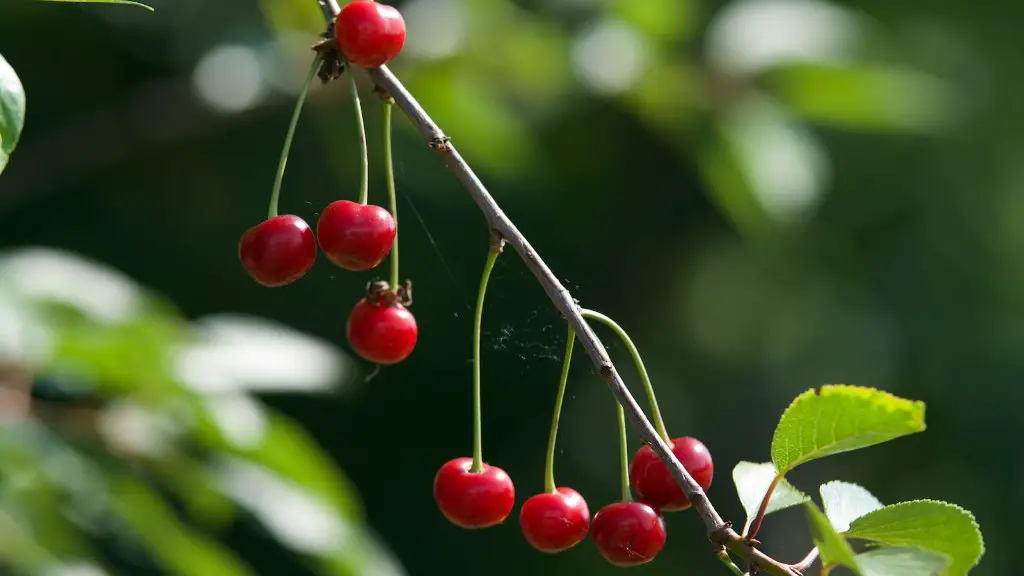Knowing how to tell the difference between a lemon tree and a lime tree is an important skill if you are an avid gardener or if you are in the citrus industry. By understanding the subtle differences between the two, you can make sure you are getting optimal yields from your plants. In this article, we will explore the various characteristics of a lemon tree and a lime tree, so you can learn how to differentiate between them.
The most obvious difference between a lemon and a lime tree is the size – lemons are usually bigger than limes. Lemons typically have a larger diameter and longer length than limes. The fruit of a lime tree is a lime, which is round and smaller than a lemon. The leaves of a lemon tree are a bit wider than those of a lime tree, and the rind of a lemon is typically thicker.
Another difference between a lemon and a lime tree is their timing. Lemon trees usually bear fruit one to two months before lime trees. This is because most varieties of limes are slower to develop their fruit than lemons. The color of the fruit is also different between the two – limes are usually a darker shade of green, while lemons are a brighter yellowish-green.
In terms of taste, limes are usually tart and acidic, while lemons have a sweeter, more citrusy flavor. The aroma of a lemon is also different from a lime – lemons tend to have a stronger, fruitier smell compared to the usually more subtle scent of limes.
The final key difference between lemons and limes is their nutritional content. Limes contain significantly more Vitamin C than lemons, while lemons generally have more Vitamin A. It is also worth noting that limes contain more acidity than lemons, making them more amenable to cooking and baking applications.
Lemon Trees vs Lime Trees: Surviveility
The durability of a lemon tree and a lime tree can also help you identify them apart. Lemon trees are more tolerant of colder climate and can survive in temperatures down to freezing. Lime trees, on the other hand, prefer warm temperatures and long summers; they may not survive in areas with harsher climates.
Lemon trees are also more drought tolerant than lime trees. While both require plenty of water for optimal growth, lemon trees tend to need less water to survive. This makes them a better option in areas with sparse rainfall or dry conditions.
Finally, lime trees are usually more susceptible to pests and diseases than lemon trees. For this reason, it may be important to take a proactive approach to pest and disease management of lime trees, in order to ensure the health and longevity of your plants.
Lemon Trees vs Lime Trees: Soil Conditions
If you are looking to plant either of these trees, understanding the soil conditions they prefer can also help you differentiate them. Lemon trees tend to thrive in soils that are rich in organic matter and well-draining. They will not do well in soils that are overly wet or clay-like.
Lime trees, on the other hand, prefer slightly acidic soils with a pH around 6.5. They can also tolerate soils with higher pH levels, up to 7.5. In either case, it is important to test your soil’s pH before planting your trees.
Finally, both lemon and lime trees require plenty of sunlight. Make sure to choose a planting spot that gets at least six to eight hours of sun per day. If you are planting both types of trees, keep in mind that lemon trees may require more sun exposure than the limes.
Lemon Trees vs Lime Trees: Pruning
Pruning your trees is another important factor in distinguishing between a lemon and a lime tree. Lemon trees typically require more pruning than lime trees. Limes often require very little pruning, if any.
When pruning a lemon tree, it is important to ensure that the main branches remain healthy, and that the fruit is easily accessible and easy to harvest. When pruning a lime tree, make sure to cut out the dead branches and leaves, as this can help promote healthy growth of the tree.
Lemon Trees vs Lime Trees: Fruiting Seasons
Fruiting season can also be used to tell the difference between a lemon and a lime tree. Lemons tend to bear fruit in the late winter or early spring, while limes usually produce fruit in the late summer or early fall.
Lemons also typically have a longer fruiting season than limes. This means that you may be able to harvest lemons for a longer period of time than limes. This knowledge can help you decide which trees to plant and when, depending on when you would like your crop to be ready for harvesting.
Lemon Trees vs Lime Trees: Disease Resistance
Like many other plants, both lemon and lime trees may be susceptible to disease. Lemon trees are typically more susceptible to pests and diseases than lime trees, due to their vigorous growth. Common ailments of lemon trees include infestations of citrus pests and signs of fungal diseases.
Lime trees, on the other hand, often show signs of blight or root rot. If you notice any of these symptoms, it’s important to take prompt action to treat the tree and remove any infected areas.
Knowing how to tell the difference between a lemon and a lime tree is a valuable skill for both gardeners and citrus farmers alike. By being mindful of these subtle differences, you can ensure that your trees are healthy and producing optimal yields for your crops.


